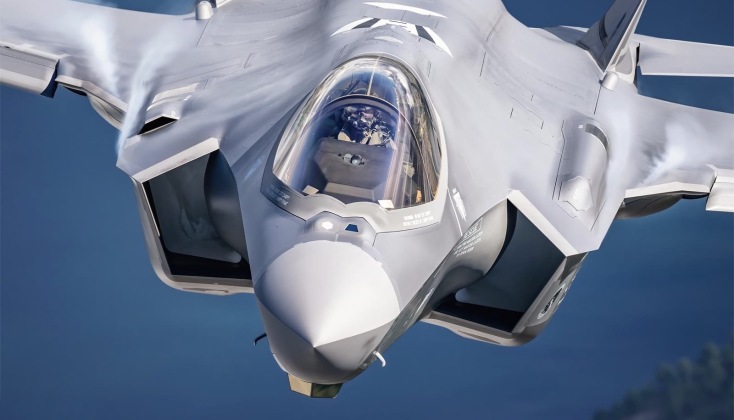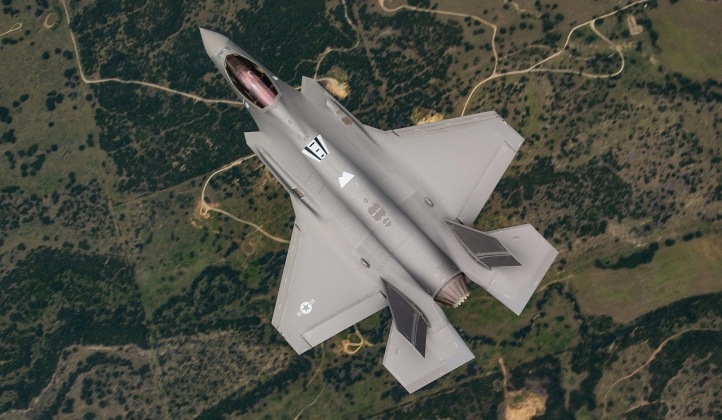News
German Facilities Preparing To Produce Over 400 American F-35 Fuselages: Will Help Break Capacity Bottleneck

German arms manufacturer Rheinmetall has selected a site in Weeze, western Germany, to begin production of “at least 400” F-35A centre fuselages beginning in 2025 according to a press release from the firm. The facility will also be able to service both German F-35s and those of “other friendly nations,” replacing prior facilities in Turkey which previously produced the F-35A centre fuselage before the Eastern European country was evicted from the fighter program for political reasons. Turkey was previously favoured for more labour intensive parts of production due to its particularly low costs, with the shift to production in Germany expected to be less efficient in terms of cost. Nevertheless, with all centre fuselage production for the F-35 currently being undertaken by American military aviation firm Northrop Grumman in the United States, a second smaller facility will help to break this key bottleneck which has prevented deliveries of the stealth fighters from expanding to meet demand. The F-35 is the only fifth generation fighter in production in the Western world, and has consistently won all recent tenders for NATO-compatible combat jets due to its very significant performance advantages over fourth generation rivals like the French Rafale and the pan-European Eurofighter largely built in Germany. Germany itself under the Angela Merkel administration was highly reluctant to consider F-35 acquisitions, although the new administration of Chancellor Olaf Scholtz within just months of coming to office decided to order the aircraft despite protests from local industry over the losses this would incur for the Eurofighter program.
Writing to Breaking Defense, Teal Group senior analyst JJ Gertler indicated regarding the importance of expanding production of the F-35’s centre fuselage that it had been a bottleneck in increasing output of the fighters. “The number of orders for F-35 now can support a production rate of around 175 a year. They are limited to 156 because that’s all the centre fuselages Northrop can produce… The [F-35 Joint Program Office] has been looking for more production for some time, and it sounds like this is the answer to ultimately replacing Turkey,” he stated. While the F-35’s primary contractor Lockheed Martin aimed to achieve deliveries of 156 F-35s in 2025, the new German facility could allow this to increase to 165 per year. This additional capacity will likely prove highly valuable as the fighter is almost universally adopted across countries seeking to modernise NATO-compatible fighter fleets, including growing numbers of NATO members from Finland and Poland to Canada and Germany itself, as well as Australia which was a key program partner outside the alliance.

Notable orders for the F-35 outside NATO, and beyond program partners, have come from Japan, South Korea, Israel and Switzerland, with the fighter effectively representing the only option for states unwilling to consider Chinese or Russian alternatives and seeking to avoid fielding capabilities that are a generation behind. Developed under the Joint Strike Fighter program, F-35s were designed primarily with an air to surface strike role and countering enemy ground based air defences in mind, and pose significantly greater challenges to such defences than other Western fighter classes largely due to their advanced electronic warfare, sensor fusion and stealth capabilities. Nevertheless the fighter is not considered ready for high intensity combat, has suffered very long delays in its development, and suffers some of the lowest availability rates of any class in the world with multiple figures in both the American civilian and military leadership expressing significant reservations regarding the program. One of the latest issues to emerge with the fighter has affected its engine, which was designed with specifications for power and particularly cooling far below those which the aircraft currently has causing tens of billions of dollars worth of additional maintenance costs and sparking calls for development of a new powerplant. The F135 engine has also been a leading cause of low availability rates. Major overruns with the fighter’s operational costs and maintenance needs are expected to force the Pentagon to make serious cuts to planned orders.












